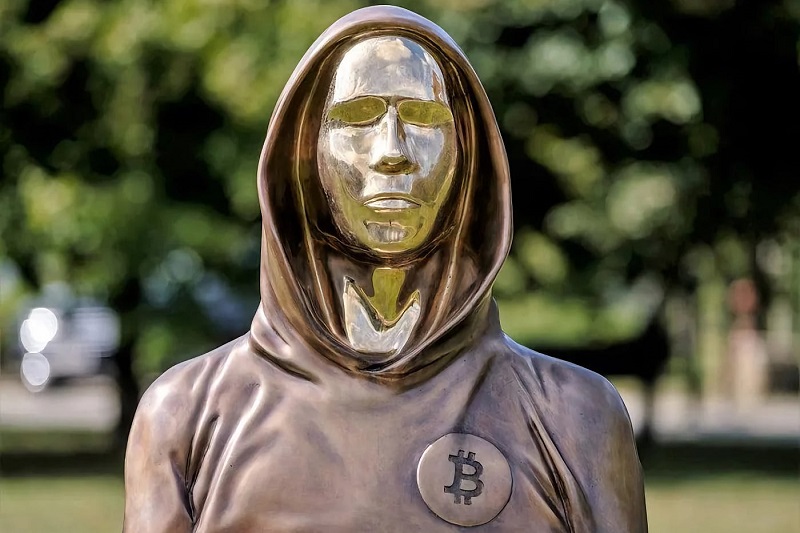The anonymity of Bitcoin’s creator, Satoshi Nakamoto, remains one of the most intriguing aspects of the cryptocurrency world. This anonymity has played a crucial role in Bitcoin’s ecosystem, shaping its growth, adoption, and ensuring its integrity as a decentralized system. But is Satoshi’s anonymity ultimately beneficial or detrimental? Let’s explore the key factors.
Decentralization and Trust
Satoshi Nakamoto designed Bitcoin to be a decentralized, trustless system. The very premise of Bitcoin is that it operates without a central authority, government, or intermediary. If Satoshi’s identity were known, it could potentially undermine this core philosophy of decentralization. Bitcoin was never about trusting an individual or organization but rather about trusting the code and the network itself.
Read Also: DYOR – What Does It Mean and Why Is It Important?
Moreover, if Satoshi were known and had a public persona, their influence—whether intentional or not—could shape or even manipulate the Bitcoin network. By staying anonymous, Satoshi neutralized this risk, ensuring that Bitcoin’s evolution would depend solely on consensus within the community, not the will of one individual.
Avoiding External Pressure
Had Satoshi revealed their identity, they could have been exposed to legal and political pressure. Bitcoin’s disruptive nature threatened traditional financial systems, making Satoshi a potential target for regulatory bodies and governments. Anonymity shielded them from these pressures.
Additionally, remaining anonymous protected Satoshi from attempts at bribery, coercion, or corruption. Without a known figurehead, there was no individual who could be compromised, ensuring Bitcoin’s integrity remained intact.
The Mystery Adds to the Myth
Satoshi’s anonymity has also contributed to the almost mythical status surrounding Bitcoin. This mystery has elevated the cryptocurrency beyond just a digital currency, turning it into a revolutionary innovation. The absence of a known creator gives Bitcoin an appeal that’s both unique and enigmatic—it’s seen as “for the people, by the people,” unlinked to any particular entity or individual.
Satoshi’s anonymity also serves as an inspiration for the broader decentralization movement. It has led to the development of other decentralized projects that, like Bitcoin, are free from a single controlling entity or figurehead.
Security of Satoshi’s Holdings
It is believed that Satoshi holds around 1 million BTC, which, as of October 2024, would be worth over $66 billion. What’s striking is that none of this Bitcoin has ever been moved. This untouched fortune reinforces the belief in Bitcoin’s security and its neutral, decentralized origins.
If Satoshi’s identity were known, there might be concerns about them using their vast holdings to influence the market. The fact that these coins remain unmoved helps reinforce confidence that Satoshi is not involved in manipulating the system.
When Did Satoshi Go Offline?
Satoshi Nakamoto communicated with the Bitcoin community through online forums and emails. However, their last known public message was on December 12, 2010, when they informed a developer that they had “moved on to other things.” After that, Satoshi faded away, with their final public forum post coming in 2011.
Satoshi’s withdrawal from the scene is widely viewed as a strategic decision to ensure that Bitcoin would continue to evolve independently of its creator. By stepping back, Satoshi allowed Bitcoin’s development to be taken up by a global community of developers, ensuring no single person could control its future.
Satoshi’s Long-Term Vision
Satoshi’s long-term vision for Bitcoin was that it would be an immutable system, free from control by any individual or group. By remaining anonymous and stepping away, they ensured that Bitcoin would evolve based on consensus, aligning with the decentralized governance model they originally envisioned.
This decision also emphasized trust in the Bitcoin protocol itself. By not attaching Bitcoin’s success to their identity, Satoshi ensured that people would trust the code and the system—not the personality behind it. This reinforced the importance of Bitcoin’s decentralized and trustless nature.
Satoshi’s Presence in the Ecosystem
Satoshi’s wallet, which contains approximately 1 million BTC, remains one of the richest in the world. With Bitcoin valued at around $66,000 per BTC as of October 2024, this fortune has a staggering worth of over $66 billion. These coins remain untouched, which many see as a testament to Satoshi’s intent to let Bitcoin function without personal involvement or control.
The public’s perception of Satoshi’s unspent Bitcoin has led to speculation about whether Satoshi is still alive or has simply lost interest. Regardless, this only serves to reinforce the idea that Bitcoin was designed to exist independently of any individual, including its creator.
Wrapping Up
Satoshi Nakamoto’s anonymity has played an essential role in protecting Bitcoin from centralized influence, legal pressure, and market manipulation while preserving its decentralized, trustless nature. The mystery surrounding Satoshi has also contributed to Bitcoin’s iconic status as a revolutionary financial system. Their withdrawal from the community and the untouched billions in their Bitcoin wallets make it clear that they intended for Bitcoin to thrive independently of any single individual.
In the end, it’s probably a good thing that Satoshi left. The ongoing obsession with uncovering Satoshi’s identity goes against their wishes for decentralization. But as humans, we tend to defy those wishes, constantly seeking to connect the dots. Hopefully, Satoshi is never found.

